Photographs: Adnan Abidi/Reuters Abhilasha Ojha in New Delhi
Planning a go-to-market strategy is a balancing act. Take too much time in the planning process and your organisation is likely to miss new opportunities and cede ground to nimble-footed competition.
On the other hand, aggressively moving into a new territory without a complete understanding of the market or a sharply focused plan can be far more costly than a protracted planning process.
However, if you accept that you will probably need to make a number of iterations for each of your decisions before they actually work on the ground, you have scope to learn from your failures and build them into your future decisions.
...
Renault, Panasonic, Haier are back in the race
Image: Panasonic's Viera televisions displayed at an electronics store in Tokyo.Photographs: Toru Hanai/Reuters
So if one were to really put ones finger on it, how do companies that flounder early on in a new market spring back into reckoning?
They try and find answers not to what should we do? but to what hinders us?, says Don Sull, professor of management practice at the London Business School and global expert on managing in turbulent markets, in his book, Why Good Companies Go Bad.
That's exactly what a handful of global brands that we will study here have done.
...
Renault, Panasonic, Haier are back in the race
Image: A salesperson recommends a refrigerator to a customer at a Haier store in Shanghai.Photographs: Aly Song/Reuters
Car maker Renault and durables marketers Haier and Panasonic made some crucial mistakes after setting foot in India but learnt from them and have had a second coming of sorts as potential winners and brands to watch out for.
Before we proceed, why did we choose these three companies? Simply on the basis of the spectacular growth each of them has posted in recent months and the kind of products they have rolled out.
...
Renault, Panasonic, Haier are back in the race
Image: A model stands next to Renault's 'Twizy Z. E. Concept Electric Vehicle' at India's Auto Expo in New Delhi.Photographs: Adnan Abidi/Reuters
Consider Panasonic and Haier that have managed to establish a strong foothold in the Rs 52,000-crore (Rs 520 billion) Indian consumer durables market (growing at 15-20 per cent annually and contributing roughly 5-6 per cent to the country's GDP).
Though the two still have a long way to go before they hope to take a position among the top five, their market share growth in recent months and investments by their respective parent companies have come as a pleasant surprise given the overall economic slowdown. Haier today has roughly five per cent share of the Indian durables market.
...
Renault, Panasonic, Haier are back in the race
Image: Panasonic's Logo at an electronics store in Tokyo.Photographs: Yuya Shino/Reuters
It aims to touch 10 per cent in the next three-four years and to be counted among the top five. Ditto for Panasonic.
The company's Indian subsidiary, which hopes to touch Rs 10,000 crore (Rs 100 billion) in turnover this fiscal, is well on its way to becoming its second largest in Asia Pacific after China with an annual revenue of $10 billion by 2018.
Now look at where the established players in the category are going.
...
Renault, Panasonic, Haier are back in the race
Image: A customer looks at water heaters at a Haier store in Shanghai.Photographs: Aly Song/Reuters
According to estimates, Samsung and LG together have a dominant combined share of 34 per cent in ACs, 45 per cent in refrigerators and an equal combined share in washing machines (semi-automatic category).
However, while Samsungs market share of AC fell from 19 per cent in 2011 to 11 per cent in February 2013, LG too shed some share in both AC and washing machines categories late last year (from roughly 26 per cent in 2011 to 17 per cent now).
In contrast, the share of Panasonic and Haier in both these categories grew 30-40 per cent (albeit on a small base).
...
Renault, Panasonic, Haier are back in the race
Image: A man walks past a message which reads 'Let's change Life, Let's change Cars' at a Renault automobile dealership in Bordeaux, Southwestern France.Photographs: Regis Duvignau/Reuters
Focus on Renault next. It has shut up its detractors with the launch of the Duster, viewed by experts as the game-changer in the SUV category. It hopes to take its 2.5 per cent share of the auto market to 10 per cent in two years.
Before understanding what they did right, it's important to understand the mistakes they committed, especially given that the errors almost threatened their very existence.
...
Renault, Panasonic, Haier are back in the race
Image: A 56-inch, 4K OLED television set is displayed in Las Vegas.Photographs: Steve Marcus/Reuters
The issues ranged from a lack of visibility to too few product offerings compared to what competitors offered, from a patchy dealership network to scant attention to design and technological innovation.
And for Renault, the pain of dealing with a failed joint venture. Given their experiences, the three have drawn up their comeback strategies on three different pillars.
For Panasonic, the gameplan was to improve its products range to be able to slug it out at the retail end; Haier focused on design to woo the Indian homemaker; and Renaults comeback strategy rested on the good old-fashioned tactic of coming up with a bang-for-the-bucks product.
...
Renault, Panasonic, Haier are back in the race
Image: A visitor walks past CDMA mobile phones on display at Haier's exhibition pavilion in Singapore.Photographs: Tim Chong/Reuters
According to Harminder Sahni, founder, Wazir Advisors, the most common mistake that multinational brands entering India make is that they believe that Indian market is starved of good products; so anything marginally better than what India already has will sell very well.
Brands miss the point that the Indian consumers aspirations are not any lower than their peers in developed world.
Hence offering from the last season or not-so-up-to-date models is the biggest mistake international companies make, says Sahni.
...
Renault, Panasonic, Haier are back in the race
Image: A Renault Captur car is displayed in Paris.Photographs: Charles Platiau/Reuters
He adds, It is surprising that most of them dont learn from the same mistake made by other companies and still choose to make their own mistakes and learn. It is illogical but thats how it has been and still is.
Renaults first mistake was probably walking into India holding a potential rivals hand (Mahindra Renault was a joint venture formed in 2007 between Indias largest utility vehicle manufacturer Mahindra & Mahindra and Renault S.A. of France with 51 per cent and 49 per cent holdings respectively; the JV ended in 2010).
...
Renault, Panasonic, Haier are back in the race
Image: A man is reflected in a sign at Panasonic's showroom in Tokyo.Photographs: Toru Hanai/Reuters
According to Marc Nassif, managing director, Renault India, the joint venture with Mahindra & Mahindra, though important for understanding the local market, issues and environment, was a mistake because it entailed losses for both the sides and, more importantly, ended up confusing the consumer.
We realised that it was critical to come solo with a strong product and have a strong distribution back-up to encourage trust among our potential consumers, adds Nassif.
...
Renault, Panasonic, Haier are back in the race
Image: A woman walks past a Haier home appliance store in Shanghai.Photographs: Aly Song/Reuters
Renaults fortunes in India turned around, so to speak, with the launch of the Duster in July 2012. It was not just a rebadged version of the Dacia Duster, available in Europe from 2010; it was tweaked substantially to meet the demands of the Indian market.
Things like high ground clearance made it suitable for both city rides and on uneven terrain. It was made available in 10 different variants eight are diesel and two petrol.
...
Renault, Panasonic, Haier are back in the race
Image: An employee works at a Renault cars sales and showroom in Moscow.Photographs: Maxim Shemetov/Reuters
The clincher was its price: at Rs 7.2 lakh, the Duster is one of the cheapest SUVs in the world. Nassif clarifies that the pricing strategy was based on value, and not on being cheap.
It's a trick that analysts feel worked in favour of the company. Middle-class customers are the folks who care most about value, says Abdul Majeed, head of the automotive sector for India at PricewaterhouseCoopers in Chennai.
If automakers offer an SUV for Rs 5-7 lakh, suddenly people are able to realise the value the model offers, he adds.
...
Renault, Panasonic, Haier are back in the race
Image: A man sits on a bench in front of Panasonic's showroom in Tokyo.Photographs: Toru Hanai/Reuters
The Duster, for the records, accounts for 80 per cent of the sales for Renault. Interestingly, while last month alone Renault sold 6,300 units of the Duster, erstwhile partner Mahindras Scorpio (the market leader) sold just 4,700 units.
Renault, incidentally, has a cross-shareholding agreement with Nissan since 1999 operative on a global basis. But while that helps synergise product development, it leaves both the brands to pursue their front-end strategy read dealership development, marketing and advertising independently.
...
Renault, Panasonic, Haier are back in the race
Image: Workers assemble refrigerators at a Haier Group plant in China's eastern port city of Qingdao.Photographs: Claro Cortes/Reuters
So at the retail level, the partners already have their own networks to ensure separate brand identities. Speaking of brand identities, Panasonic, which re-entered the Indian market in 2008 after being here since the mid-90s, realised it needed to permanently jettison its mom-and-pop-store brand image to compete on equal terms with the existing players in the segment.
In 2009, for the first time ever, Panasonic decided to enlist as many as four celebrities, including names like Ranbir Kapoor, Katrina Kaif, Dia Mirza and Jacqueline Fernandes, to endorse its various product categories (in most other global markets, brand ambassadors represent just the parent brand Panasonic).
...
Renault, Panasonic, Haier are back in the race
Image: A Renault Zoe electric car is displayed at the Economy Ministry in Paris.Photographs: Benoit Tessier/Reuters
In the Indian market, brand endorsements especially by film and sports celebrities is important to allow trade to have confidence and consumers to know that this brand is here to stay.
It was our branding (with our durable, quality products) that allowed us to shift from being perceived as a mom-and-pop store brand, as was the case earlier, says Manish Sharma, managing director, Panasonic India.
Over the next three years, the brand will invest Rs 1,500 crore (Rs 15 billion) in advertising and marketing.
...
Renault, Panasonic, Haier are back in the race
Image: A man walks past an advertisement board of Panasonic outside an electronic shop in Tokyo.Photographs: Kim Kyung-Hoon/Reuters
Another major issue with the brand was the failure in bringing out new products quickly. This also affected its ability to localise products, which in turn affected its ability to cut prices over time.
Things changed in 2008. It was like a re-entry into the market with a more solid understanding after our early mistakes, admits Sharma.
He says the parent company understood that India was a crucial market, one that couldn't be ignored if it wished to grow its business globally. Big-ticket investments were therefore unavoidable.
...
Renault, Panasonic, Haier are back in the race
Image: Women pass air conditioners made by China's Qingdao Haier Group in Beijing.Photographs: Reuters
A big chunk of Panasonics investment since then has gone into R&D, so that products aimed specifically for the Indian consumer (something that didn't happen earlier) could be developed faster.
Technology is our strength; but before 2008, the technology was coming at a cost to the consumer. There wasn't value for money then.
Now we have leveraged our technological prowess to develop products based on value engineering and cost efficiencies, Sharma adds. This also allowed the company to be in line with the global strategy.
...
Renault, Panasonic, Haier are back in the race
Image: Renault's Clio on display in Paris.Photographs: Christian Hartmann/Reuters
Panasonic has a two-pronged approach to the Indian market now local innovations to drive volumes and bringing in international ranges to drive the aspirational image of the brand, say experts.
In LCD televisions, Panasonic rolled out its first India-specific innovation in 2010 dubbed the Sound of India, which places huge emphasis on bass as Indians love it. Air conditioners, too, saw local innovations.
We didn't have window ACs, but for the Indian market our R&D centre developed a split AC almost at the cost of a window AC, says Sharma. Panasonic launched the first India-specific AC, the Cube AC, around the same time. At Rs 16,900, it was only about Rs 1,500 higher than a window AC.
...
Renault, Panasonic, Haier are back in the race
Image: Panasonic's 'Evolta' bike robot, powered by the company's Evolta rechargable batteries, is demonstrated in Tokyo.Photographs: Yuriko Nakao/Reuters
What's more, the brand realised that it not only needed to expand product categories, it also had to introduce more models within categories. Localised R&D centres and factories allowed the company to speed to market, and from 16 AC models four years ago, today Panasonic has 65 models in ACs.
Haier, on its part, has increased its market share steadily riding on innovative design and technology. Its water heaters, for instance, have USB ports to plug in music players, and even built-in radios, given the Indian consumers fondness for music.
Consider also its Bottom Mount Refrigerator series. These fridges have the vegetable holder at a level where the the consumer doesn't have to bend to draw it out.
...
Renault, Panasonic, Haier are back in the race
Image: Household appliances await delivery outside a department store in Shanghai.Photographs: Claro Cortes/Reuters
The accompanying campaign, Jhukna Mat, went a long way in reiterating the brands positioning as a leading player in the larger refrigerator segment. As part of our survey, we found that in India, 80 per cent consumers used the freezer compartment much less and the vegetable compartment and others sections more often; so we inverted the entire product, explains Eric Braganza, president, Haier Appliances India.
He adds the company is looking at a growth of 40 per cent over the next few years and hopes to be counted among the country's top five consumer durable brands in five years.
...
Renault, Panasonic, Haier are back in the race
Image: Employees work on the assembly line at the Renault plant in Sao Jose dos Pinhais, Brazil.Photographs: Rodolfo Buhrer/Reuters
Haier has also spent considerable time and money on sprucing up its retail plan. Braganza says, Among other things, with a limited dealer network, getting noticed in multi-brand outlets was a challenge.
Haier has not only widened its dealer footprint, it has also given equal importance to training the handling staff to deal with consumer queries efficiently.
...
Renault, Panasonic, Haier are back in the race
Image: Visitors to Photokina look through 3-D glasses at the booth of Panasonic in Cologne, Germany.Photographs: Wolfgang Rattay/Reuters
It also took up corner slots in multi-brand outlets to offer consumers an undisturbed view of the range and the quality of its products.
The company also developed experiential zones (155 all over the country) that display Haier products only. This turned out to be a big hit with consumers and helped build stickiness.
The reality of the Indian market is that the dealer still plays a big role. If the dealer is confident, he can sell the product to the consumer, says Braganza.
...
Renault, Panasonic, Haier are back in the race
Image: A worker operates a forklift past rows of refrigerators ready for shipment to the United States at Haier factory in China's eastern port city of Qingdao.Photographs: Claro Cortes/Reuters
Analysts reckon that it is this strategy that has given it a distinct identity while quintessentially Chinese, it is not cheap and offers great quality. This is a far cry from even a couple of years ago when most consumers didn't know the name of the brand, or if they did, dismissed it as an also-ran.
So there you have it: First impressions are not necessarily last impressions for brands and brand owners.
After having corrected their mistakes and also calibrated marketing efforts with the Indian consumers mindset, all these brands have gained significant market share.
...
Renault, Panasonic, Haier are back in the race
Image: Models at the Renault exhibition booth unveil Renault Twingo in Frankfurt, Germany.Photographs: Kai Pfaffenbach/Reuters
It is good to remember that it is important to catch emerging trends as it is easier than creating new trends. Apple may create a trend, but Samsung has shown how to catch it without batting an eyelid.
Tata Safari created the trend and Scorpio caught it. Panasonic has caught on the economy and environment trends in its campaigns at the right time.
Renault has captured the luxury-looking-but-affordable-and-fuel-efficient-vehicles trends pretty well. In other words, if the first interaction doesn't go off too well, it is a smart thing to set yourself up for a good follow-up interaction.

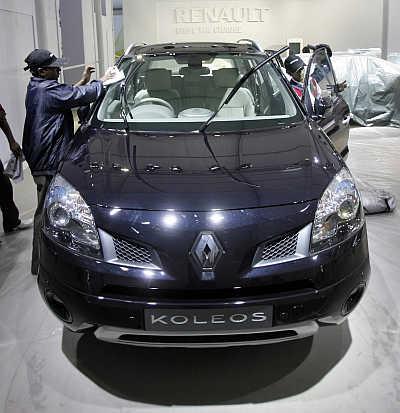
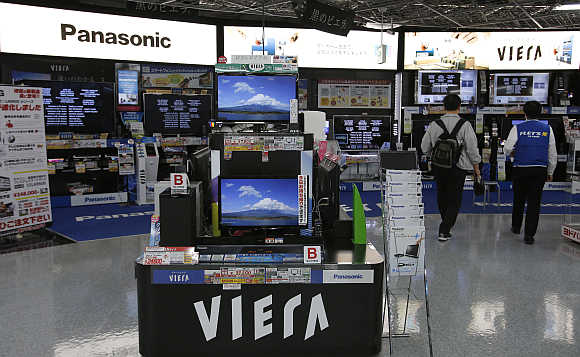

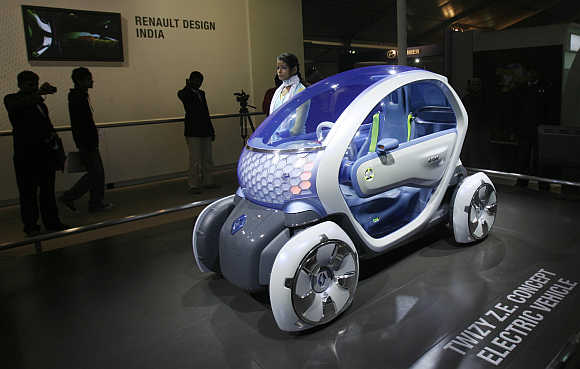
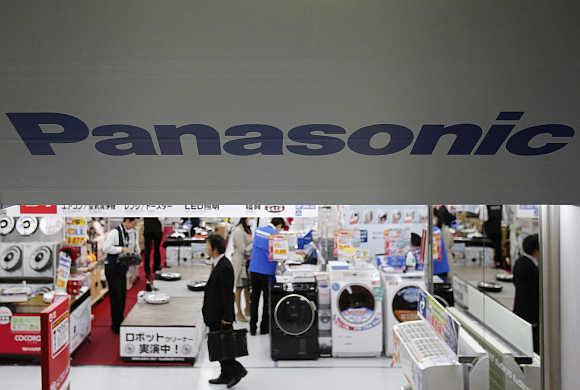

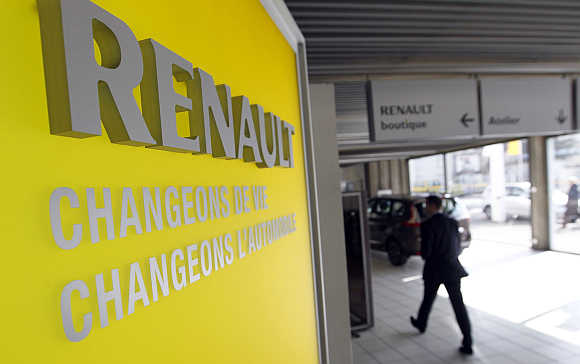
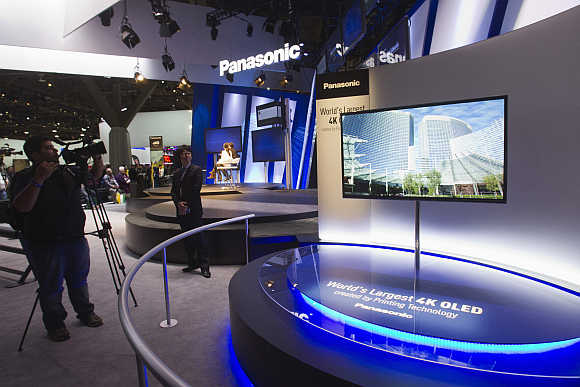

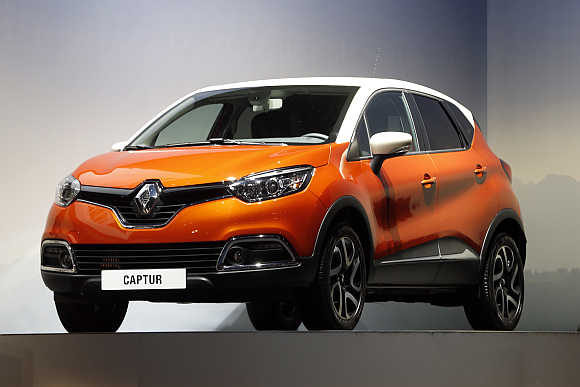
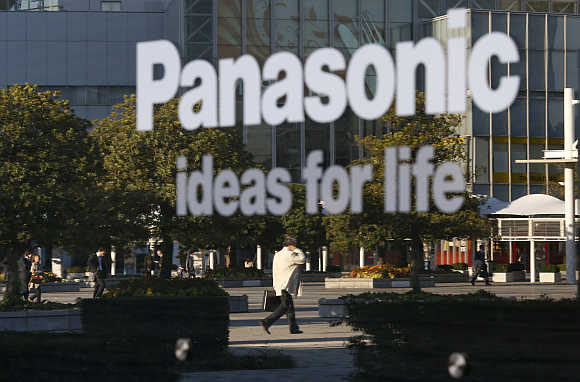
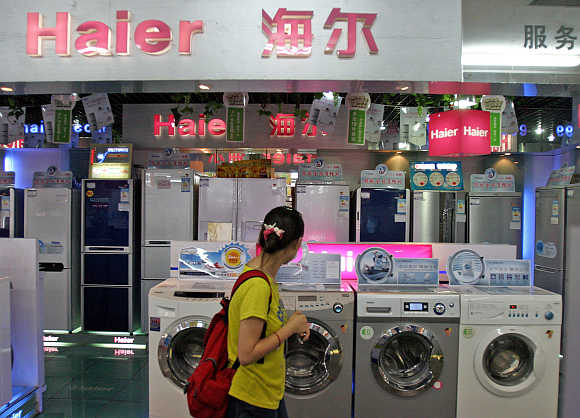
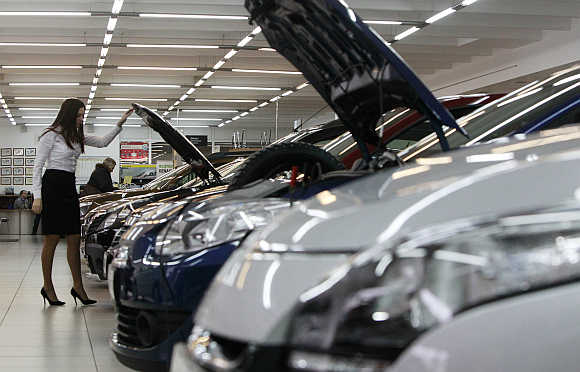
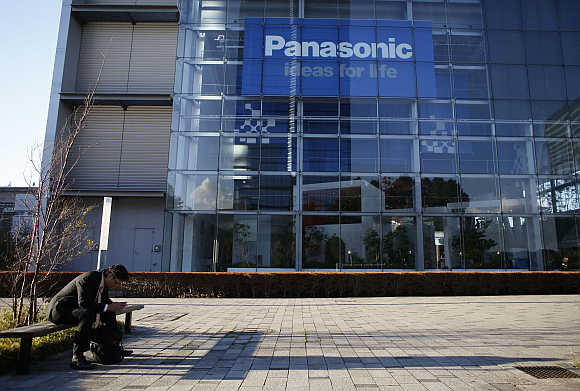
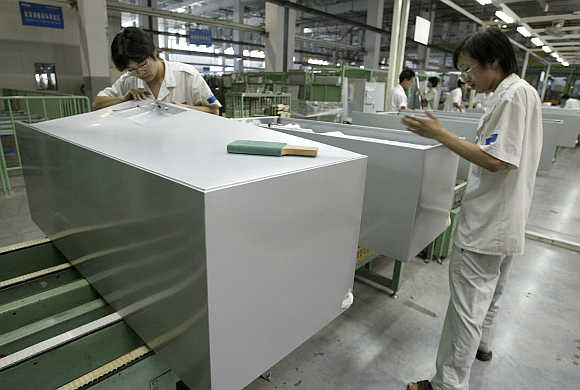

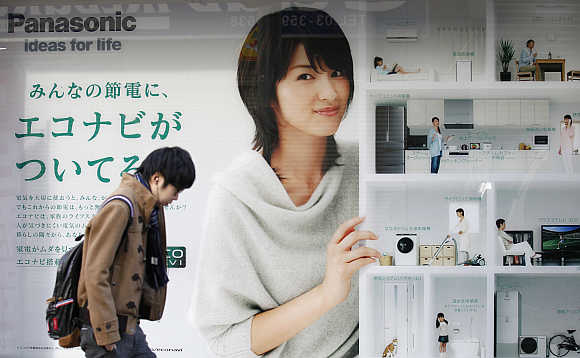


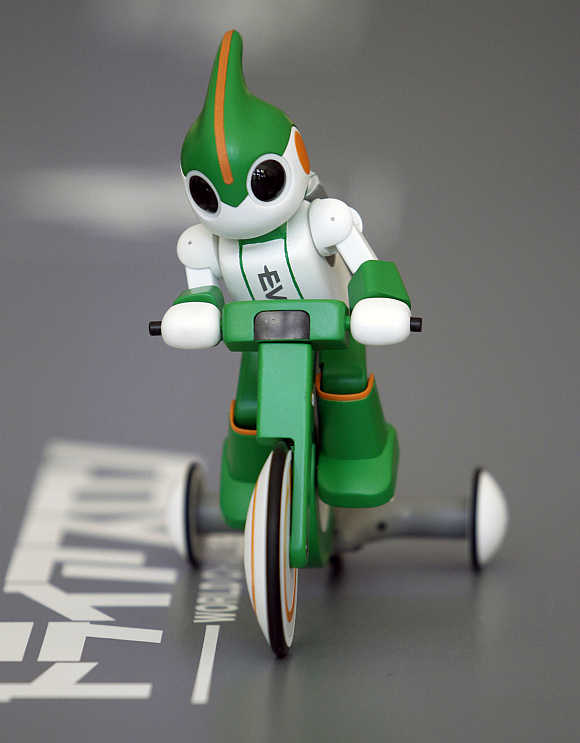

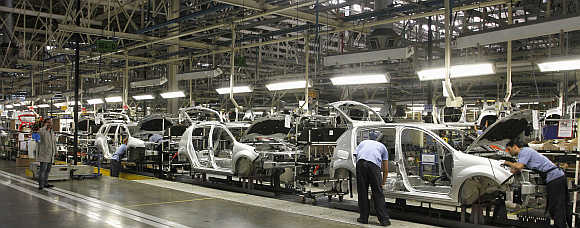

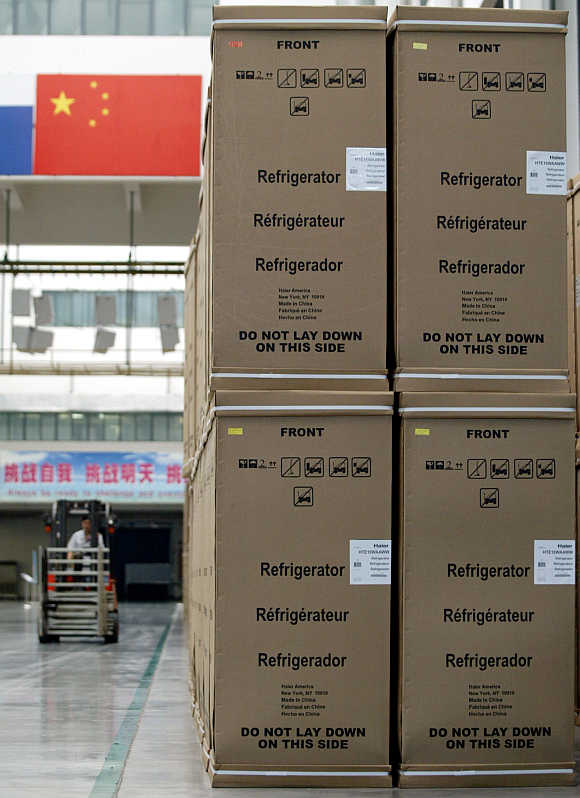
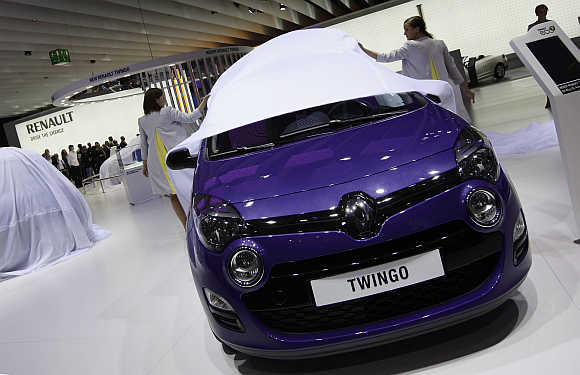

article